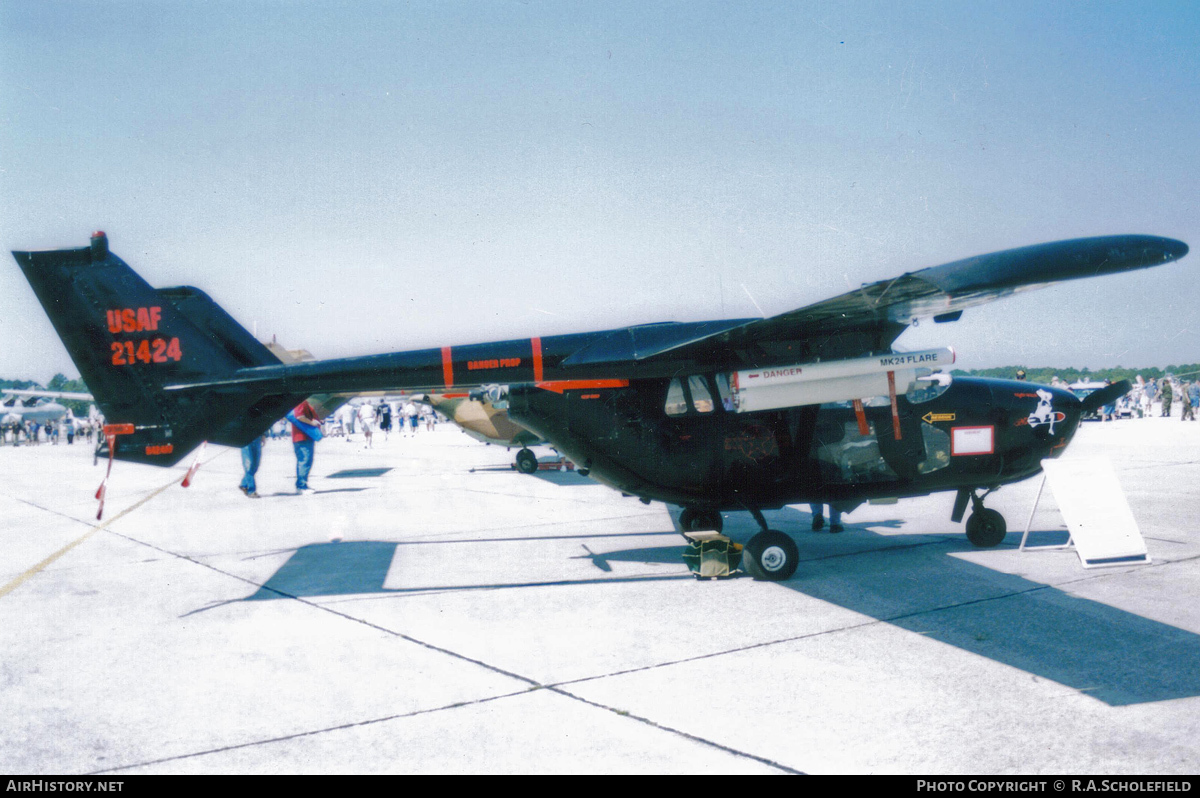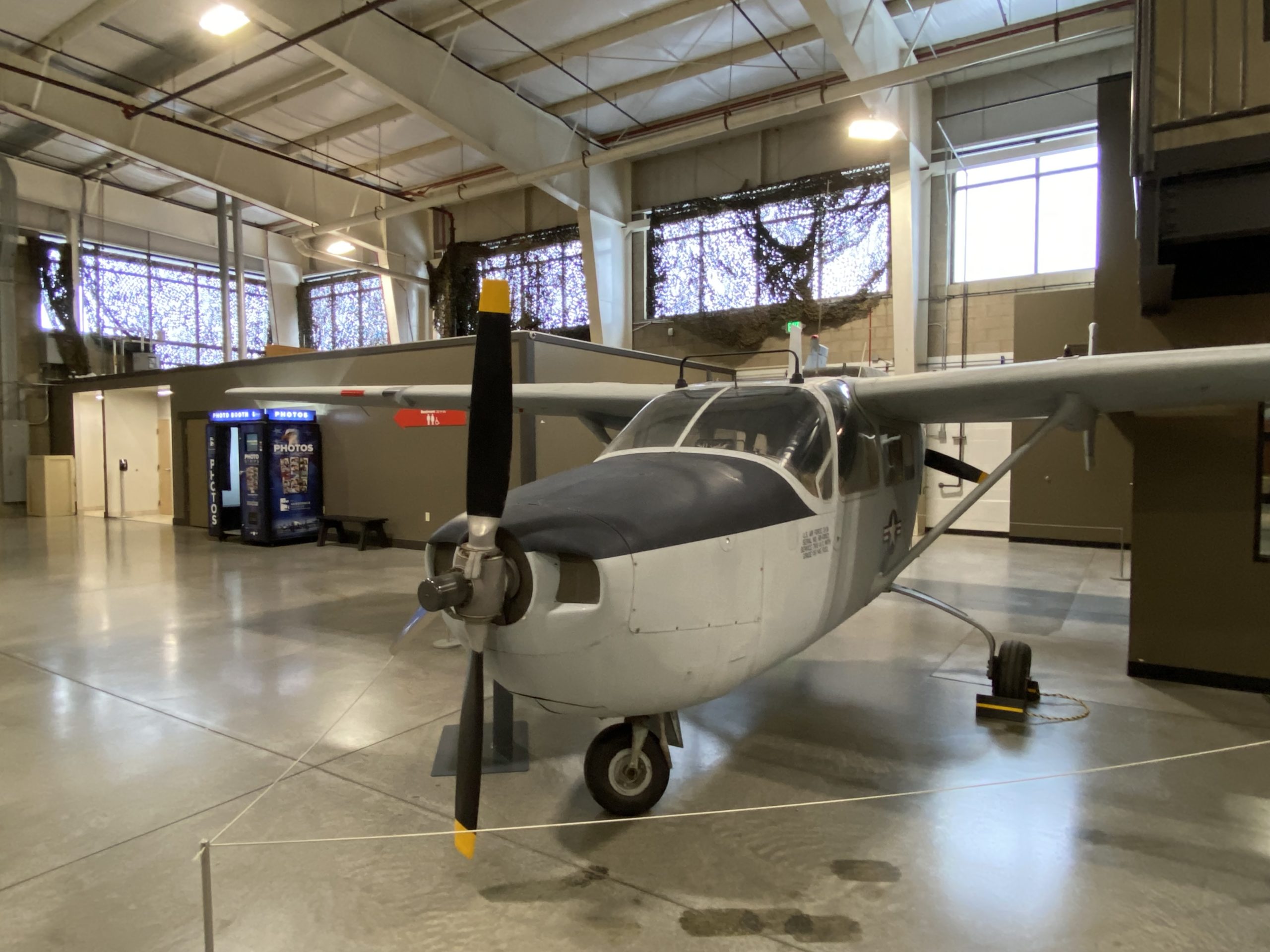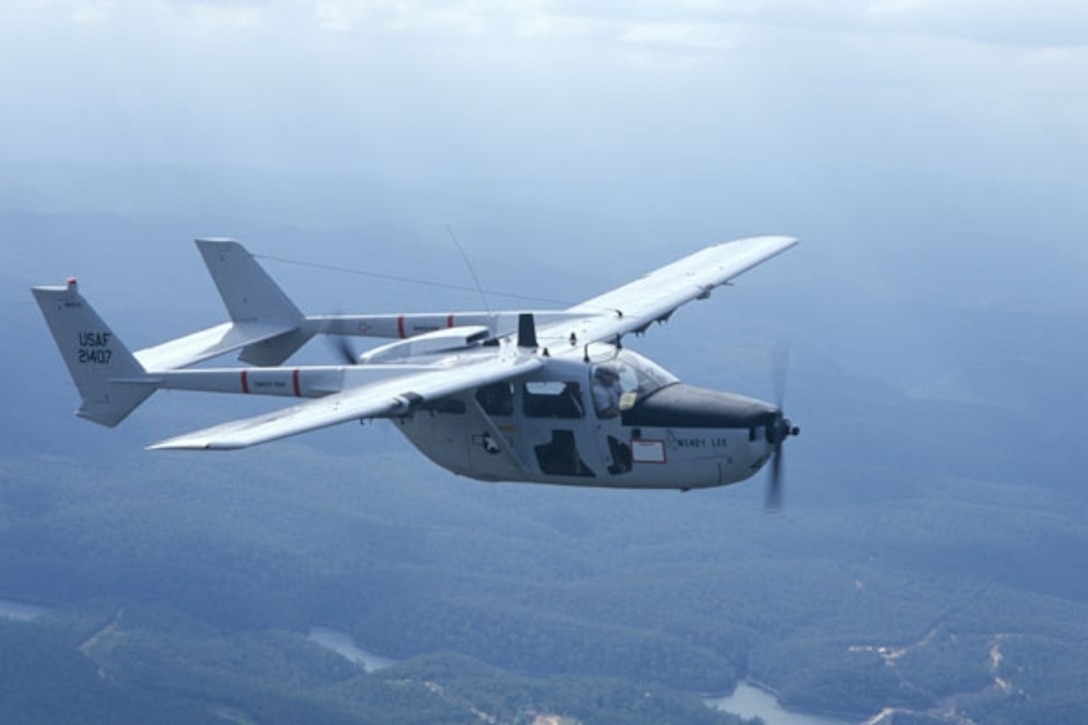O2 Aircraft - In the mid-1970s, the California Department of Forestry and Fire Protection, or CAL FIRE, found that contractor-owned attack aircraft, mostly single-engine Cessna 182s and Cessna 210s, did not provide the airspeed and safety needed for the new aircraft. of the department. . airline schedules. In 1974, Chief of Air Operations Cotton Mason inspected 40 USAF O-2s at Davis-Monthan Air Force Base. The top 20 were selected and taken to Fresno, California. These aircraft were FAC aircraft in Vietnam and were shipped back to the US in containers and disassembled and palletized when they arrived in Fresno. A crew of California Conservation Corps (CCC) members under the supervision of the CDF Battalion Chief, who was an FAA Certified Mechanic with Inspection Authority (IA), reassembled the aircraft. Entering service in 1976, they served CALFIRE successfully for over 20 years, until they were replaced by a fleet of OV-10 Broncos.
As with the civilian version, the Skymaster was a low-cost, twin-piston engined aircraft, with one engine in the nose of the aircraft and a second engine in the rear of the fuselage. The drag configuration meant a simpler method of single-engine operation due to centerline thrust compared to the low-wing mounting common on most twin-engine light aircraft, and also allowed for a high wing, providing clear observation below and behind the aircraft. During the Vietnam War, the Skymaster in forward air control (FAC) was to be replaced by the OV-10 Bronco, but the O-2A maintained night missions after the introduction of the OV-10. high lighting in the cockpit, which makes night exploration ineffective. The O-2 was completely retired after additional nightly upgrades to the OV-10.
O2 Aircraft

The first O-2 flew in January 1967 and the aircraft entered production soon after, with delivery to the USAF in March 1967. A total of 532 O-2s were built in two variants for the USAF in 1970. The O-2A served as the FAC aircraft with the 20th Tactical Air Support Squadron, but the O-2B was equipped with loudspeakers and sheeting for use in the psychological operations (PSIOPS) role. Several USAF O-2 aircraft were later transferred to and operated by the former South Vietnamese Air Force VNAF.
Cessna O 2a Flight Manual
After the Vietnam War, the O-2 continued to serve with both the US Air Force and the Air Guard until the late 1980s. Six former USAF O-2A aircraft were also transferred to the US Navy in 1983 for use as "field operators" with Attack Squadron 122 (VA-122), the Pacific Fleet's replacement squadron for the A-7 Corsair II at Naval Air Station Lemoore. . , California. These same aircraft were later transferred to Strike Fighter Squadron 125 (VFA-125), the F/A-18 Hornet FRS at NAS Lemoore, in 1986 for use in the same theater control role.
The six Navy O-2As remained in this role until September 1990, when they were replaced by T-34C Turbo Mentor aircraft transferred from the Naval Air Training Command. Four of the Navy's O-2A aircraft were retired, and two of them became civilly registered in October 1991. These two aircraft were flown at US air shows performing the "Viet Nam Warbird COIN/FAC" routine in the 1990s. The routine debuted at the Wings Over Houston (Texas) Air Show in October 1991
Of the six USN aircraft mentioned above, two were transferred to the US military in late 1990.[4] The O-2As originally entered the US Army inventory in 1967 from the USAF inventory and were augmented by a 1990 aircraft transfer from the US Navy. Several dismantled USAF O-2s are still in storage at Davis-Monthan AFB, Arizona.[4] Two O-2As were used at Laguna Army Airfield, Arizona as part of test programs conducted from the Yuma Proving Ground. These were retired in October 2010 and sent to a museum.
The O-2 Skymaster (also known as the "Oscar Deuce" or "Duck") is a military version of the Cessna 337 Super Skymaster used as an observation and control (FAC) aircraft. The US Air Force commissioned Cessna to build a military variant to replace the O-1 Bird Dog in 1966. His giants are attached to the nose and rear of the fuselage. A double boom forward behind the wings to the vertical stabilizers, with the rear boom between them. The horizontal stabilizer is located behind the thrust screw, mounted between and connecting the two booms.
Cessna Skymaster Hi Res Stock Photography And Images
The model was larger and had more powerful engines, retractable landing gear and a rear airfoil for the rear engine. (The "Super" prefix was subsequently dropped from the name.)
American production began in 1982, but was continued from Reims, France, with the FTB337 STOL and the military FTMA Milirole.
The Skymaster handles differently than a conventional twin-engine plane, primarily in that if a propeller fails, the plane won't yawn into flight. Without the differential problem associated with conventional (twin-on-wing) twins, strut failure during take-off will not cause a runway veer. Since there is no minimum controllable minimum speed (Vmc), flight control at any airspeed with the gins disabled is not as critical as it is with the gins on the wing with the strut connected; However, speed performance and especially climb speed are affected. Flying the Skymaster requires the pilot to have a multi-pilot rating, although many countries issue a separate "thrust rating" for the Skymaster and other similar aircraft.

Ground handling requires some care and procedure. The rear tire overheats and can stop driving on very hot days.
Oxygen Masks 101
Accidents have occurred where the runway is shorter than the one-turn takeoff wheels and pilots, unaware of rear engine stall, have attempted a nose-only takeoff.
FAA Airworthiness Directive 77-08-05 prohibits one-way takeoffs and requires the posting of a placard marked "NO GINGEN OFFICER."
The Skymaster's unique sound is created by its rear propeller cutting turbulent air from the forward propeller and through the airframe, while its forward rear propeller receives uninterrupted air.
From 1976 to the mid-1990s, the California Department of Forestry and Fire Protection used the O-2 variant of the 337 Skymaster as a tactical firefighting aircraft. They were replaced by the North American OV-10 Broncos beginning in 1993.
Cessna O 2a Hi Res Stock Photography And Images
From 1991 to 2001, the Cuban exile group Hermanos al Rescate (Brothers to the Rescue) used Skymasters, among other aircraft, to fly search and rescue missions over the Florida Straits looking for raftsmen trying to cross the straits to escape from Cuba and to find them, sending them rescue materials. Rescue efforts were coordinated with the US Coast Guard, which worked closely with the group. They chose Skymasters because their high wing offered better visibility of the waters below, they were reliable and easy to fly on long-duration missions (averaging 7 hours), and they added a margin of safety with a two-speed thrust line. In 1996, two Skymaster rescue brothers were shot down by the Cuban Air Force over international waters. Both planes were shot down by a MiG-29, while another MiG-23 fighter was on the runway nearby.
Força Aérea de Mocambique (3 x FTB-337G) - ex-Portuguese Air Force FTB-337G refurbished and offered by the Portuguese Government of Mozambique in 2011 and 2012.
(32 × FTB-337G): Purchased in 1973 to replace the squadron's aging Dornier Do 27 fleet, which saw extensive use during the Portuguese colonial war. The first 337 shipments did not arrive until December 1974 - after the war. The last Skymaster in service with the Portuguese Air Force was retired on 25 July 2007.
O2 absorbers, o2 plans, aircraft o2 systems, o2 login, o2 de, o2 fitness, o2 machine, mein o2, o2 sk, o2 chamber, o2 cleaning, o2 analyzer

0 Comments